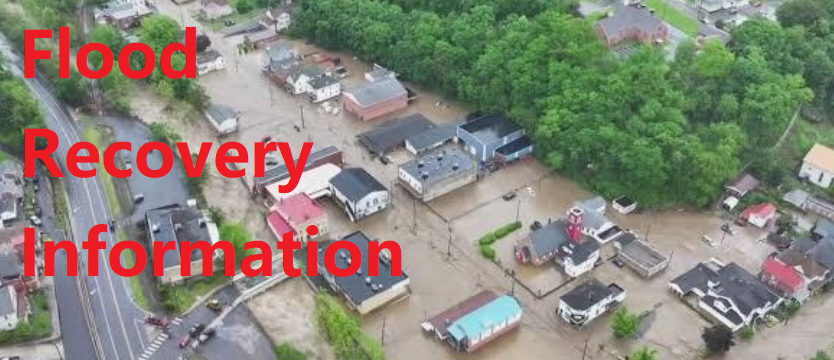February 19th, 2023 by WCBC Radio
At Governor’s Direction, Administration Continuously Monitoring West Virginia’s Water and Air Quality after East Palestine Train Derailment
On the evening of February 3, 2023, the West Virginia Emergency Management Division (WVEMD) Watch Center was notified of the train derailment in East Palestine, Ohio. Upon notification, WVEMD activated the State Emergency Operations Plan, alerting State agencies and local emergency managers of the incident.
Since the initial notification, and at the Governor's direction, WVEMD, the West Virginia Department of Environmental Protection (WVDEP) and the Department of Health and Human Resources (WVDHHR) have closely monitored the situation for any impacts to West Virginia or its citizens.
Low levels of butyl acrylate reached the Ohio River through Little Beaver Creek, a small tributary located near the Ohio and Pennsylvania border. Upon learning of the spill, the WVDHHR's Bureau for Public Health (BPH) immediately began contacting the five water systems along the Ohio River that could be impacted and recommended, out of an abundance of caution, to shut down all water intakes until additional information could be obtained. The Weirton PSD detected chemicals at their intake and the water source was quickly switched to an alternate supply out of an abundance of caution.
As the State agency charged with regulating drinking water safety, WVDHHR remains in close contact with all water systems in the state who source water from the Ohio River. Water sampling is ongoing and recent results have been non-detect for butyl acrylate in both the raw and finished water supplies. Water sampling will continue.
In addition, WVDEP is working with the Ohio River Valley Water Sanitation Commission (ORSANCO), the Ohio EPA and the U.S. EPA on monitoring and tracking the chemical as it moves down the Ohio River.
As of Monday at 3 pm, the chemical plume was confirmed in the Ohio River at mile marker 199, approximately 22 miles upstream of Ravenswood and traveling at 1 mph. It is estimated that it is currently near the Ravenswood area.
The U.S. Agency for Toxic Substances and Disease Registry (ATSDR) developed Provisional Health Guidance Values for drinking water. The current detections in the river are well below the ATSDR health values and decreasing as the plume travels.
Testing is being conducted approximately seven miles above the water intake for the City of Huntington. Additionally, West Virginia American Water is implementing an alternate water intake that pulls from the Guyandotte River as a precautionary measure.
The WVDEP is coordinating with ORSANCO to continue daily monitoring of multiple sites along the Ohio River.
The WVDEP is also in contact with the Ohio EPA and the U.S. EPA regarding air quality monitoring. The U.S. EPA has conducted continuous air monitoring along the perimeter of the train derailment site in Ohio and has not detected any concentrations of contaminants above screening levels. WVDEP air monitoring stations located in the northern panhandle have not detected any impacts to air quality stemming from the derailment.
“EMD will continue 24/7 monitoring through the duration of this incident, notifying officials of any change to the situation," said Dr. Matt Blackwood, EMD Deputy Director. “I'm proud that our team in the Justice Administration works together to immediately implement measures needed to protect the health and safety of our citizens."
West Virginians with questions or concerns regarding water quality should contact the water utility serving their household. Please report any environmental issues, regardless of their cause, to the statewide spill line at 1-800-642-3074.
Please note that the water issues occurring in East Palestine and Fort Gay are not related as they are on separate water supplies being the Ohio River and Big Sandy River.
-
Continuous water quality monitoring is in place on the Ohio River and chemicals from the train derailment are non-detect at all intakes.
-
Recent sampling results have shown concentrations under 2 parts per billion, which is well under the provisional health guidance value issued by the U.S. Agency for Toxic Substances and Disease Registry (ATSDR), which is 560 parts per billion.
-
The current sampling data is available here: https://www.orsanco.org/east-palestine-train-derailment-spill-response/.
-
River conditions following excessive rainfall over the last 24 hours have rendered West Virginia American Water’s temporary intake on the Guyandotte River inoperable. Enhanced treatment and further contingency plans are in place to continue water use from the Ohio River.
-
There are no active drinking water advisories issued at this time.
The WVDEP has posted an informational webpage at: https://dep.wv.gov/key-issues/Pages/East-Palestine.aspx. It includes recent sampling results and locations, and links to EPA air monitoring results.
-
As of 11 a.m. Thursday, the leading edge of the chemical plume was estimated to be near mile marker 264 on the Ohio River, which is near Point Pleasant and the mouth of the Kanawha. The plume is estimated to reach the Huntington area by late Friday or early Saturday morning.
-
The highest concentrations observed on Wednesday were below 3 parts per billion. The influx of water from the Kanawha River should add approximately 25% dilution, on top of the dilution added from the current rain events.
-
These preliminary monitoring results are still well below the provisional health guidance values issued by the U.S. Agency for Toxic Substances and Disease Registry (ATSDR), which is 560 parts per billion for drinking water, and continuing to decrease as the plume travels downstream.
-
DHHR's Bureau for Public Health has worked with water systems in West Virginia to recommend changing water supplies to preempt any potential effects as necessary.
-
There have been no confirmed contaminants in the finished drinking water from this spill in any water system in West Virginia. There are currently no water advisories issued at this time related to this spill.




.jpg)













